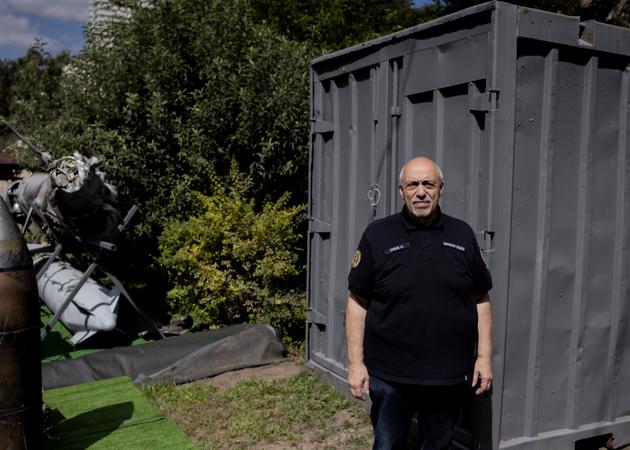


In Kyiv, forensic tests on Russian missile reveal their international secrets
FeatureUkrainian experts are dissecting the missiles and drones fired into their territory by Kremlin forces, and their discoveries reveal military information and components from the West.
Some of the Russian forces' most sensitive military secrets were lying gutted on the floor of a modest laboratory on the outskirts of Kyiv. "This is Kartograph, a top-secret FSB drone," said Oleksandr Vysikan, a forensic explosives technician. "We identify every part of this device to determine its origin. Look at the optical unit – no less than 12 cameras!" As its name suggests, Kartograph is used to produce 3D digital maps. "This Austrian-made optical unit costs around $100,000," continued the expert. He showed a list of the valuable components found in the drone's interior. They come from the United States (Xilinx and Marvell processors), Taiwan (Wizmart), South Korea (Samsung) and above all Austria (Austrian Optic Technologies).

A number of parts were produced in 2023, the specialist informed Le Monde. "The Russians try to erase the traces of provenance, the brand and the serial number, but we always manage to find them, even if it sometimes takes a long time because we don't have the databases." Scratches were visible where the brand, country of origin and serial number used to appear, as if sandpaper was rubbed in. But that did not stop the lab from identifying most of the parts on three recently delivered Kartograph drones. These aircraft were shot down in the Soumy, Balakliïa and Donetsk regions of Ukraine.
Dozens of Russian drones, missiles and munitions were on display opposite the military laboratory of the Kyiv Institute of Scientific Research and Forensic Expertise (IRSEL). Some of the weapons appeared almost intact, while others were deformed by shocks and extremely violent explosions. All were dissected by IRSEL experts.
"We carry out an average of 300 expert assessments a month," said 64-year-old Oleksandr Rouvine, director of the institute. "We work closely with the army and military intelligence, both of which have their own research laboratories for other purposes, notably to find technological and tactical countermeasures to Russian attacks," continued the former Soviet army colonel. IRSEL, which reports to the Ministry of Justice, has two main missions.
'Decline in the quality'
"We are identifying the Russian perpetrators of the criminal firing on Ukrainian territory, and we now have around 100 names since February 24, 2022," said Rouvine. "During the first six months of the Russian invasion, the components sometimes bore the surnames of the employees assembling the missiles. It was the result of bureaucratic procedures. But the Russians realized their mistake and stopped listing the names." The other priority is to trace the origin of projectile components to identify their manufacturers. In the case of high-tech foreign components or parts from countries allied with Ukraine, IRSEL passes on the information to the authorities in the hope of freezing their acquisition by Russian arms manufacturers.
You have 60.19% of this article left to read. The rest is for subscribers only.
